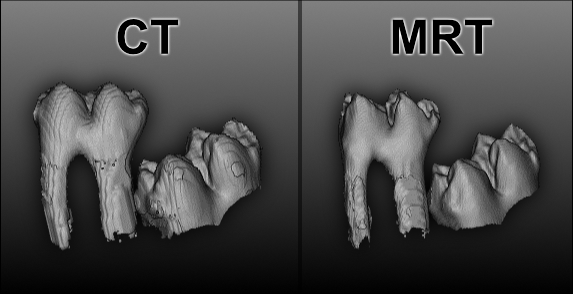X-ray examinations, i.e. examinations with ionizing radiation, are frequently used for the unequivocal diagnosis of many diseases, including orthodontics. As part of a scientific study conducted by Fraunhofer IIS and Dental Clinic 3 - Orthodontics at Erlangen University Hospital, our researchers were able to show that MRI can be used just as successfully in many areas of orthodontics as the ionizing radiation methods that have been used to date.
In the future, for example, it should be possible to diagnose the position of displaced or impacted teeth without X-rays. The research team received an award for the published results at the annual meeting of the German Orthodontic Society.
